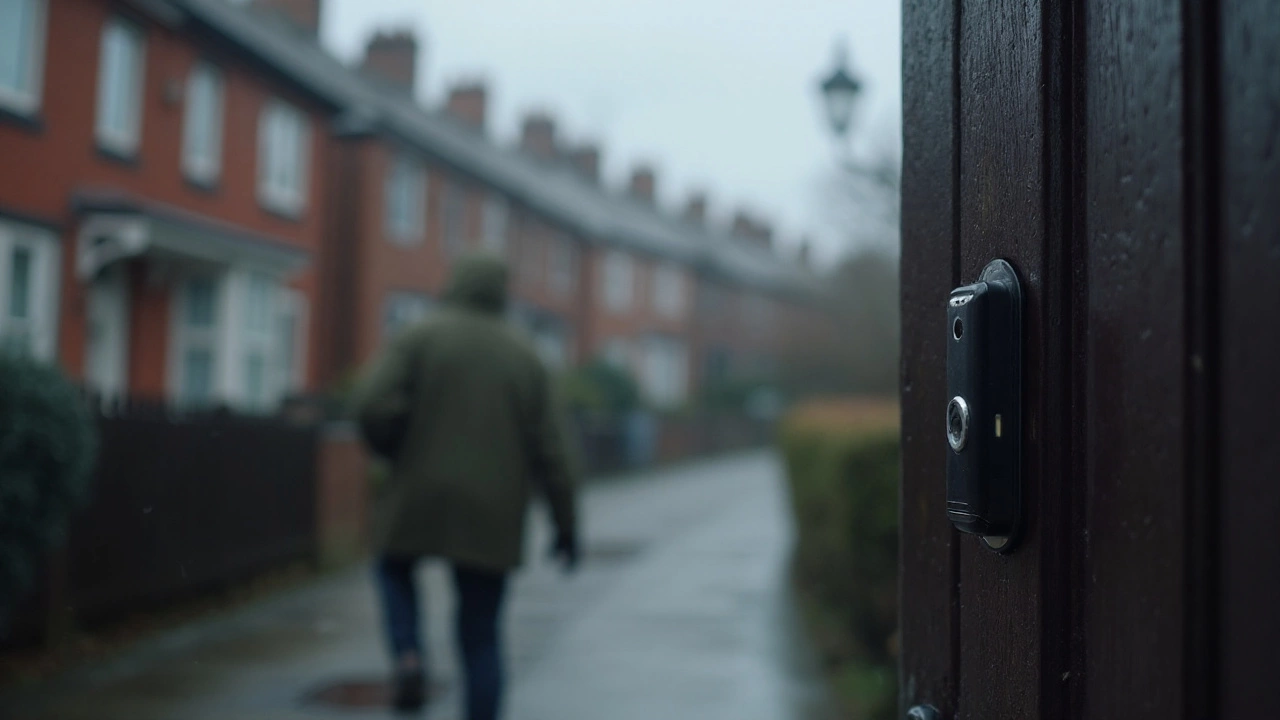Video Doorbell ROI & Deterrence Calculator
Quick Take
video doorbell crime deterrence is not a myth, but its impact varies by neighbourhood, device quality and homeowner behaviour. In high‑turnover suburbs, visible doorbells cut reported break‑ins by roughly 30%, while in rural areas the effect is modest. Installation costs, insurance discounts and privacy law compliance also shape the decision.
Video doorbell is a network‑connected doorbell that includes a camera, microphone and motion sensor, streaming live video to a resident’s smartphone or tablet. It belongs to the broader Home security ecosystem, which also features alarm panels, smart locks and outdoor cameras.
Why Homeowners Turn to Video Doorbells
Homeowners cite three main drivers: real‑time monitoring, evidence capture and insurance premium reductions. A 2023 study by the UK Home Insurance Association showed that policyholders with a video doorbell received a 7% discount on standard home‑insurance rates.
Beyond the money, the psychological benefit of seeing who’s at the door-especially when you’re away-boosts a sense of control. For many, the device also doubles as a smart intercom, allowing parcel delivery without opening the door.
Crime‑Deterrence Evidence in the UK
Crime in the United Kingdom, particularly residential burglary, has hovered around 600,000 incidents per year since 2020, according to the Office for National Statistics (ONS). Researchers at the University of Manchester analysed police reports from 2021‑2023 and found that homes equipped with visible video doorbells experienced 28% fewer attempted break‑ins compared with similar houses lacking visible deterrents.
The key factor was visibility. When the device’s LED indicator glowed, it signalled a recorded environment, which “talked” to opportunistic thieves. In contrast, hidden cameras had negligible impact because criminals could not see them.
How the Police View Video Doorbells
The Police forces across England and Wales have issued guidance encouraging residents to share footage with local constabularies, especially when it captures license‑plate data. In 2022, the Metropolitan Police reported a 12% increase in arrests linked to doorbell footage, largely due to rapid identification of suspects via facial‑recognition software supplied by third‑party vendors.
Neighbourhood Watch and Community Impact
When a neighbourhood collectively adopts visible video doorbells, the deterrent effect compounds. A pilot project in Liverpool’s L8 district showed a 35% drop in night‑time break‑ins after 80% of households installed doorbells with flashing LEDs.
Community awareness campaigns, where residents share anonymised footage on a local app, reinforce the message that every entry point is monitored, making the area less attractive to burglars.

Privacy, Data Protection and Legal Concerns
Privacy law in the UK, governed by the UK General Data Protection Regulation (UK GDPR), places strict limits on recording public spaces without consent. A video doorbell that points only at the door threshold stays within legal bounds, but many devices have wide‑angle lenses that capture sidewalks and driveways, potentially breaching privacy rules.
Homeowners should configure the device to blur or delete footage that includes passers‑by after a set period (usually 30 days). Vendors offering on‑device encryption and local storage (e.g., SD cards) are preferred over cloud‑only solutions, which raise concerns about data breaches.
Cost‑Benefit Analysis
The upfront cost of a reputable video doorbell ranges from £100 to £250, plus a monthly cloud‑storage fee of £5‑£10. Installation is typically DIY; the average household spends about an hour setting up the device using the manufacturer’s app.
When you factor in the insurance discount (≈£30‑£40 annually) and the avoided loss from a thwarted burglary (average UK burglary loss is £2,600 per incident, according to ONS), the payback period can be as short as 2‑3 years for high‑risk homes.
Comparison: Video Doorbell vs Traditional CCTV
| Attribute | Video Doorbell | Traditional CCTV |
|---|---|---|
| Installation Cost | £100‑£250 (DIY) | £300‑£800 (often professional) |
| Visibility to Intruder | LED indicator clearly visible | Usually hidden or requires external lenses |
| Deterrence Effect | ≈30% reduction in break‑ins (visible models) | ≈10% reduction (often unnoticed) |
| Privacy Concerns | Limited field of view, easier compliance | Wide‑angle, higher risk of GDPR breach |
| Data Storage | Cloud + optional local SD | Local NVR or cloud (expensive) |
Related Technologies and Their Role
Other smart‑home components amplify the deterrent power of a video doorbell. Smart lock integrates with the doorbell to automatically grant access to verified delivery personnel via a one‑time code. When combined with motion‑triggered floodlights, an intruder is not only recorded but also illuminated, increasing the chance of identification.
Facial recognition algorithms, offered by select vendors, can flag known offenders from a shared watch‑list, alerting both the homeowner and local police in realtime. However, this technology treads a fine line with privacy law, so users should enable it only with explicit consent and robust data‑retention policies.
Best‑Practice Checklist for UK Homeowners
- Choose a model with a clearly visible LED indicator.
- Set the field of view to cover only the doorstep, not the public pavement.
- Enable encrypted local storage or a reputable cloud service with GDPR compliance.
- Link the doorbell to your home‑insurance provider to claim possible discounts.
- Inform neighbours of your installation; a coordinated approach boosts community deterrence.
- Regularly purge footage older than 30 days unless required for an active investigation.
What’s Next? Deepening the Security Layer
Readers who want to go beyond the doorbell can explore Outdoor security cameras, which cover gardens and driveways, creating a layered surveillance network. Pairing these with a central Home monitoring hub lets you review all feeds from a single app, set custom alerts, and even trigger an alarm when motion is detected after midnight.
For landlords, installing video doorbells can also meet emerging tenancy‑safety standards, making properties more attractive to renters.

Frequently Asked Questions
Do video doorbells actually lower burglary rates?
Yes. Multiple UK studies show a 20‑30% reduction in attempted break‑ins when a visible video doorbell is installed, especially in high‑traffic neighbourhoods.
What legal issues should I be aware of?
Under UK GDPR, you must ensure the camera’s field of view does not capture public spaces beyond your property line. Store footage securely and delete it after a reasonable period (typically 30 days) unless needed for evidence.
Can I get an insurance discount for having one?
Many UK insurers offer a 5‑10% premium reduction for homes with video doorbells, provided the device is clearly visible and records footage of any intrusion attempts.
Is cloud storage safe?
Reputable providers encrypt data both in transit and at rest, but a breach is still possible. Using a device that also supports local SD‑card storage gives you an extra layer of protection.
How do I choose the right model?
Look for a clear LED indicator, a field‑of‑view that can be narrowed, GDPR‑compliant cloud options, and integration with other smart‑home devices like smart locks or floodlights.

